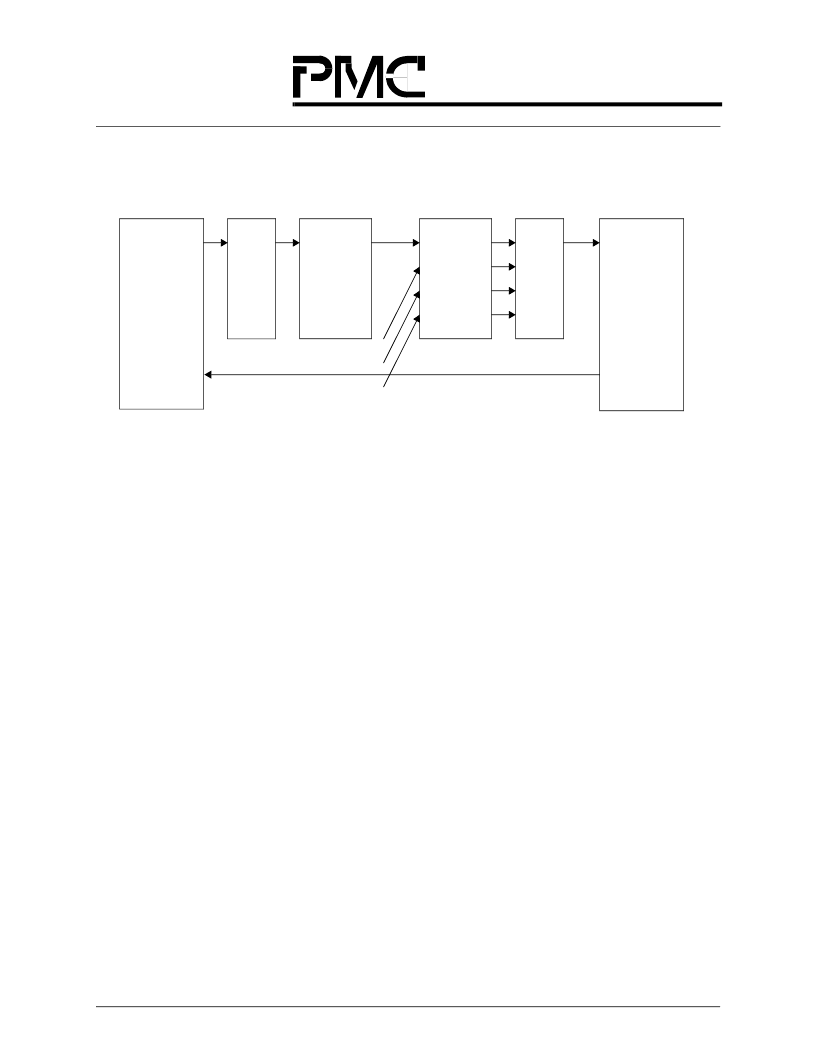- 您現(xiàn)在的位置:買賣IC網(wǎng) > PDF目錄378056 > PM73487-PI (PMC-SIERRA INC) 622 Mbps ATM Traffic Management Device PDF資料下載
參數(shù)資料
| 型號(hào): | PM73487-PI |
| 廠商: | PMC-SIERRA INC |
| 元件分類: | 數(shù)字傳輸電路 |
| 英文描述: | 622 Mbps ATM Traffic Management Device |
| 中文描述: | ATM/SONET/SDH SUPPORT CIRCUIT, PBGA503 |
| 封裝: | EPBGA-503 |
| 文件頁數(shù): | 239/251頁 |
| 文件大小: | 3126K |
| 代理商: | PM73487-PI |
第1頁第2頁第3頁第4頁第5頁第6頁第7頁第8頁第9頁第10頁第11頁第12頁第13頁第14頁第15頁第16頁第17頁第18頁第19頁第20頁第21頁第22頁第23頁第24頁第25頁第26頁第27頁第28頁第29頁第30頁第31頁第32頁第33頁第34頁第35頁第36頁第37頁第38頁第39頁第40頁第41頁第42頁第43頁第44頁第45頁第46頁第47頁第48頁第49頁第50頁第51頁第52頁第53頁第54頁第55頁第56頁第57頁第58頁第59頁第60頁第61頁第62頁第63頁第64頁第65頁第66頁第67頁第68頁第69頁第70頁第71頁第72頁第73頁第74頁第75頁第76頁第77頁第78頁第79頁第80頁第81頁第82頁第83頁第84頁第85頁第86頁第87頁第88頁第89頁第90頁第91頁第92頁第93頁第94頁第95頁第96頁第97頁第98頁第99頁第100頁第101頁第102頁第103頁第104頁第105頁第106頁第107頁第108頁第109頁第110頁第111頁第112頁第113頁第114頁第115頁第116頁第117頁第118頁第119頁第120頁第121頁第122頁第123頁第124頁第125頁第126頁第127頁第128頁第129頁第130頁第131頁第132頁第133頁第134頁第135頁第136頁第137頁第138頁第139頁第140頁第141頁第142頁第143頁第144頁第145頁第146頁第147頁第148頁第149頁第150頁第151頁第152頁第153頁第154頁第155頁第156頁第157頁第158頁第159頁第160頁第161頁第162頁第163頁第164頁第165頁第166頁第167頁第168頁第169頁第170頁第171頁第172頁第173頁第174頁第175頁第176頁第177頁第178頁第179頁第180頁第181頁第182頁第183頁第184頁第185頁第186頁第187頁第188頁第189頁第190頁第191頁第192頁第193頁第194頁第195頁第196頁第197頁第198頁第199頁第200頁第201頁第202頁第203頁第204頁第205頁第206頁第207頁第208頁第209頁第210頁第211頁第212頁第213頁第214頁第215頁第216頁第217頁第218頁第219頁第220頁第221頁第222頁第223頁第224頁第225頁第226頁第227頁第228頁第229頁第230頁第231頁第232頁第233頁第234頁第235頁第236頁第237頁第238頁當(dāng)前第239頁第240頁第241頁第242頁第243頁第244頁第245頁第246頁第247頁第248頁第249頁第250頁第251頁

PM73487 QRT
PMC-Sierra, Inc.
PMC-980618
Issue 3
622 Mbps ATMTraffic Management Device
Released
Datasheet
227
Figure 72 shows an example of connecting the QRT to the QSE using the Vitesse VSC7135 and
the VSC7214.
Another interconnection method is to put all the signals from two or three interfaces over a link,
including the SOC line.
NOTE: The BP_ACK_IN(3:0) signal does not always go to the same card as the data and SOC signals. For
example, the data signals might go to the first stage of the fabric and the BP_ACK_IN(3:0) signal
would go to the third stage of the fabric. For this reason, the BP_ACK_IN(3:0) signal often cannot
be combined with the data and SOC signals in a serialized interface. These signals can be combined
in a switch fabric that had the first and last stages of the fabric on the same card.
11.2
The QRT/QSE can be connected using standard serializer/deserializer chipsets such as those pro-
vided by Hewlett Packard
and National Semiconductor
.
Connecting to Standard Serializer/Deserializer Chipsets
The Hewlett Packard serializer/deserializer chipsets, HDMP-1012/1014, HDMP-1022/1024, and
HDMP-1032/1034 (preliminary), are ECL, 5V and 3.3V devices, respectively, that can run at 66
Mhz.
These devices are ideally suited for gang four applications, where the 16 data lines and a single
copy of the SOC can be turned into a single differential pair.
In certain 3-stage fabrics, the BPACK and data can share the serializer: 16 data lines, a single
copy of the SOC and the four BPACK signals can be turned into a single differential pair when
the devices run at 62.5 Mhz.
More infomation about these devices can be found at:
http://www.hp.com/HP-COMP/fiber/sg/gen_chip.html
Figure 72. Connecting the QRT to Gigabit Ethernet Transceivers
QRT
(PM73487)
PLD
BP_ACK
VSC7135
VSC7214
PLD
QSE
(PM73488)
×
16
相關(guān)PDF資料 |
PDF描述 |
|---|---|
| PM73487 | 622 Mbps ATM Traffic Management Device |
| PM73488-PI | 5 Gbit/s ATM Switch Fabric Element |
| PM73488 | 5 Gbit/s ATM Switch Fabric Element |
| PM7349 | Ultraframer DS3/E3/DS2/E2/DS1/E1/DS0 |
| PM7350 | Dual Serial Link, PHY Multiplexer |
相關(guān)代理商/技術(shù)參數(shù) |
參數(shù)描述 |
|---|---|
| PM73488 | 制造商:PMC 制造商全稱:PMC 功能描述:5 Gbit/s ATM Switch Fabric Element |
| PM73488PI | 制造商:未知廠家 制造商全稱:未知廠家 功能描述:Telecommunication IC |
| PM73488-PI | 制造商:Rochester Electronics LLC 功能描述: 制造商:PMC-Sierra 功能描述: |
| PM7349 | 制造商:PMC 制造商全稱:PMC 功能描述:Quad J2, E3 and DS-3 Framer |
發(fā)布緊急采購,3分鐘左右您將得到回復(fù)。